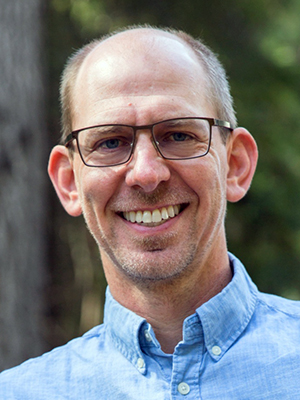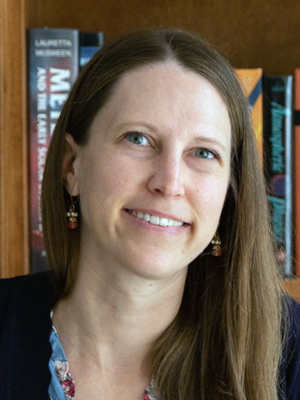AAS Members Honored by European Scientific Societies

Richard Fienberg Running Hare Observatory
On 22 September the German Astronomical Society and the Europlanet Society, both in the middle of virtual annual meetings, independently announced the recipients of their latest prizes for scientific excellence. Among the honorees are several of our AAS colleagues. The following text is adapted from the societies' press releases:
German Astronomical Society
 The 2020 Karl Schwarzschild Medal, the most prestigious astronomical prize in Germany, goes to Friedrich-Karl Thielemann — an International Affiliate of the AAS — for his research at the intersection of nuclear physics and astrophysics. His theoretical efforts, combined with comparison to experiments and observations, has had a significant impact on the understanding of stellar explosions. In his many outstanding theoretical contributions, he predicted nuclear cross sections and reaction rates of nuclei across the periodic table, including highly unstable ones. During his more than 40-year career, he achieved a full circle from nuclear input to studies of stellar evolution and explosions, the formation of heavy elements, and the resulting chemical evolution of galaxies. Thielemann excelled in providing the basis for the most extreme events in the universe, from Type Ia supernovae, novae, and X-ray bursts; to core-collapse supernovae and hypernovae; to neutron star mergers. His dedication to combining mathematics and physics to unravel the origins of the elements in the universe has led him to professional positions around the globe. He currently holds an emeritus professorship in cosmology and particle physics at the University of Basel and continues his research as a guest scientist at the GSI Helmholtz Centre for Heavy Ion Research in Darmstadt.
The 2020 Karl Schwarzschild Medal, the most prestigious astronomical prize in Germany, goes to Friedrich-Karl Thielemann — an International Affiliate of the AAS — for his research at the intersection of nuclear physics and astrophysics. His theoretical efforts, combined with comparison to experiments and observations, has had a significant impact on the understanding of stellar explosions. In his many outstanding theoretical contributions, he predicted nuclear cross sections and reaction rates of nuclei across the periodic table, including highly unstable ones. During his more than 40-year career, he achieved a full circle from nuclear input to studies of stellar evolution and explosions, the formation of heavy elements, and the resulting chemical evolution of galaxies. Thielemann excelled in providing the basis for the most extreme events in the universe, from Type Ia supernovae, novae, and X-ray bursts; to core-collapse supernovae and hypernovae; to neutron star mergers. His dedication to combining mathematics and physics to unravel the origins of the elements in the universe has led him to professional positions around the globe. He currently holds an emeritus professorship in cosmology and particle physics at the University of Basel and continues his research as a guest scientist at the GSI Helmholtz Centre for Heavy Ion Research in Darmstadt.
Europlanet Society
Jonathan Fortney (University of California, Santa Cruz) and Heather Knutson (California Institute of Technology) — both Full Members of the AAS — are jointly awarded the 2020 Paolo Farinella Prize for their significant contributions to our understanding of the structure, evolution, and atmospheric dynamics of giant planets. This annual prize was established in 2010 to honor the memory of Italian scientist Paolo Farinella (1953-2000). The award acknowledges an outstanding researcher not older than 47 years (Farinella's age when he passed away) who has achieved important results in one of Farinella’s fields of work.
 Fortney’s theoretical work has led to a much better understanding of the atmospheres, interiors, and evolution of giant planets. He has been able to provide theoretical evidence that helium in Saturn’s interior is dramatically concentrated into a helium-rich shell. He has demonstrated that the pattern of heavy-element enrichment in our solar system’s giant planets, compared to the Sun, is also seen in giant exoplanets. He has also developed sophisticated models of giant exoplanet atmospheres to understand their emitted spectra and atmospheric circulation. Fortney received his BS in physics at Iowa State University and his PhD in planetary science at the University of Arizona. He is currently a professor at the Department of Astronomy & Astrophysics of the University of California, Santa Cruz, and director of the Other Worlds Laboratory.
Fortney’s theoretical work has led to a much better understanding of the atmospheres, interiors, and evolution of giant planets. He has been able to provide theoretical evidence that helium in Saturn’s interior is dramatically concentrated into a helium-rich shell. He has demonstrated that the pattern of heavy-element enrichment in our solar system’s giant planets, compared to the Sun, is also seen in giant exoplanets. He has also developed sophisticated models of giant exoplanet atmospheres to understand their emitted spectra and atmospheric circulation. Fortney received his BS in physics at Iowa State University and his PhD in planetary science at the University of Arizona. He is currently a professor at the Department of Astronomy & Astrophysics of the University of California, Santa Cruz, and director of the Other Worlds Laboratory. Knutson transformed scientists’ approach to observations of exoplanets. In 2007 she discovered day-night temperature contrasts in "hot Jupiter" HD 189733b, confirming theoretical predictions and launching the field of the observational characterization of the dynamics of exoplanetary atmospheres. Since then, she led an ambitious observational program with both space-based and ground-based observatories to characterize hot Jupiters and sub-Neptune planets. She also showed that, contrary to what was thought at the time, hot Jupiters are not solitary; at least half of them "have friends" — more distant planetary-mass companions orbiting the same star. Knutson received her BS in physics at Johns Hopkins University and her PhD in astronomy at Harvard University. She currently holds the position of professor in the Division of Geological and Planetary Sciences at the California Institute of Technology.
Knutson transformed scientists’ approach to observations of exoplanets. In 2007 she discovered day-night temperature contrasts in "hot Jupiter" HD 189733b, confirming theoretical predictions and launching the field of the observational characterization of the dynamics of exoplanetary atmospheres. Since then, she led an ambitious observational program with both space-based and ground-based observatories to characterize hot Jupiters and sub-Neptune planets. She also showed that, contrary to what was thought at the time, hot Jupiters are not solitary; at least half of them "have friends" — more distant planetary-mass companions orbiting the same star. Knutson received her BS in physics at Johns Hopkins University and her PhD in astronomy at Harvard University. She currently holds the position of professor in the Division of Geological and Planetary Sciences at the California Institute of Technology.
Congratulations, all!

